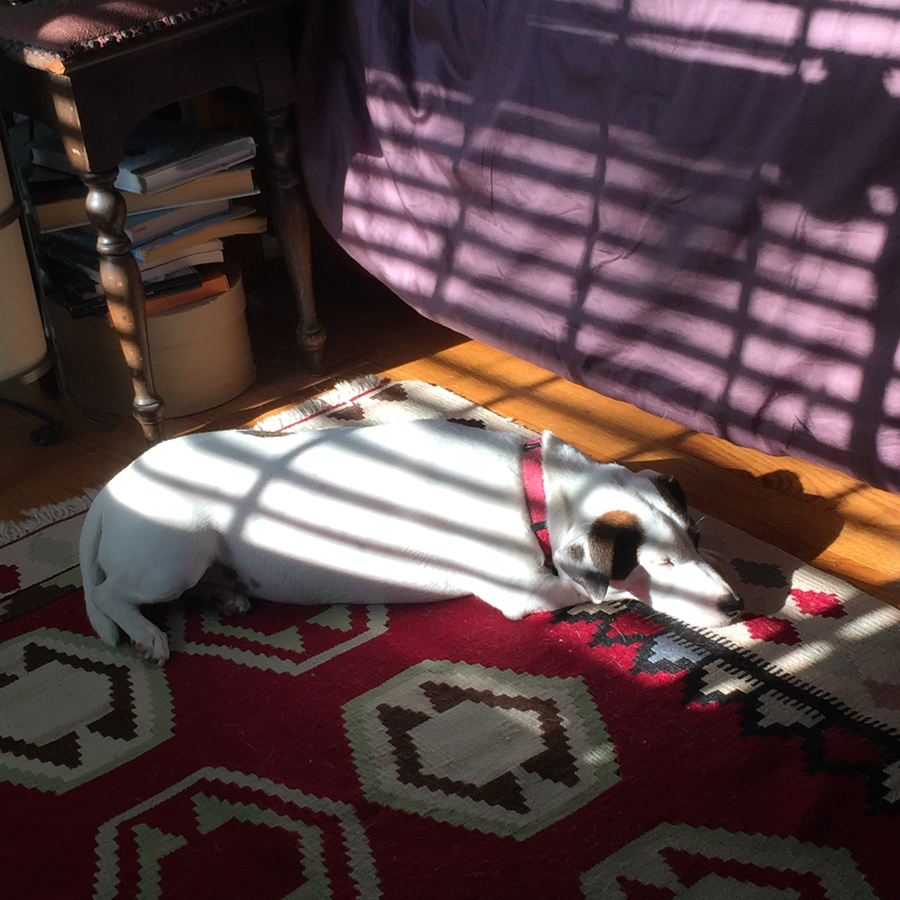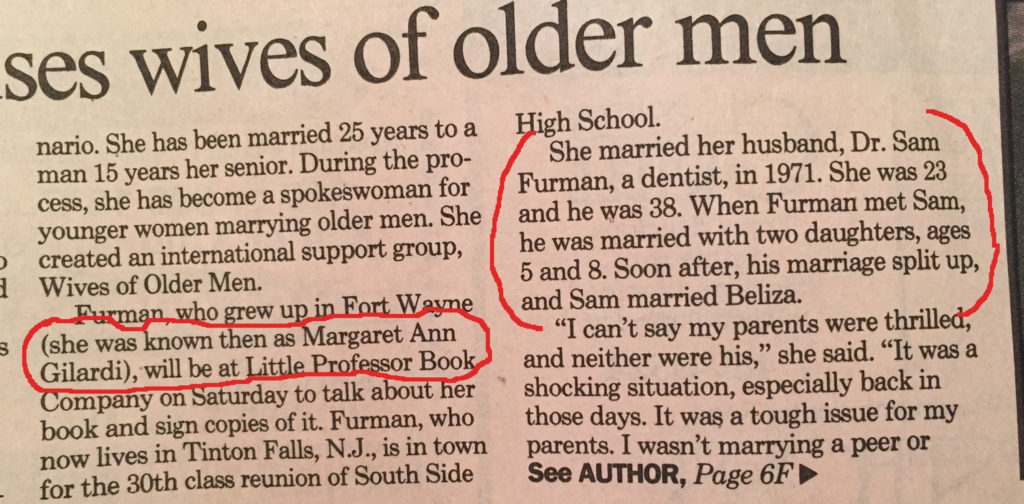I think it was last week, when I was running around lower Ferndale on this and that errand, that I started thinking about how we treat our dogs. There’s a small hobo encampment under an overpass, and not far away, a pet boutique on Woodward called Fur Babies or something, a term I’m always struck by.
I coo and baby-talk to Wendy as much as anyone, but I never call her a fur baby, although I refer to myself as her mom, Alan as dad and Kate as sissy, so I can’t really talk. The biggest gift you can give an animal in your care is to simply try to understand them, to the best of your ability, knowing you’ll never get it all the way right. And while they show their devotion to us in many ways, our relationship is not parental. At all.
I think back on the way we treated my first dog, which we got when I was in junior high school, and want to cringe. Housebreaking was done by rubbing their nose in their accidents. You corrected chewing and other slights with a rolled-up newspaper across the nose. Crate-training was unheard-of; while you might confine a dog to the kitchen or another room with a baby gate or something, for the most part, when you left the house the dog was simply left to its own devices and expected to figure things out. If they didn’t, if they chewed up a sofa pillow or magazine or something, we applied the rolled-up newspaper. This was a commonly accepted training practice; everybody did it.
Don’t get me started on spaying and neutering. OK, go ahead. Only female dogs were ever sterilized, but often only after a litter or two — people spoke of “letting” their dog have puppies first, as though reproduction was a matter of personal happiness for the animal. Males were never neutered, because it was an understanding that no male would willingly inflict castration on another, even in a different species. And so lots of mutts happened, because here was the other thing: Dogs were generally free to roam. Not every dog; some were confined to a yard or tied out on a long line. But an amazing number were simply let out in the morning and did their dog thing in the great outdoors all day, at least in good weather.
Alan’s dad had a pair of Irish setters that lived in the garage, year-round. The cat stayed out all night long. Sometimes she brought home a frog.
Some exceptions: Cats were routinely neutered, because tomcats spray, but the females were more often left to go in and out of heat. But cats were hardly ever confined to a house.
There were consequences to this, of course. Dogs getting run over by cars was a thing that happened, a lot. Stepping in poop was another thing that happened, often, because no one carried bags on walks. Dogs and cats defecated where they wanted and it was left to the property owner to clean up or step in. Oh, and lots of dogs ran away and were never seen again.
This was just pet culture.
When did it change? Hard to know; I went through a long pet-free phase, but when we got Spriggy, everything was different. He was my birthday present in 1991, and Alan bought a book by the Monks of New Skete, who are known for their beautifully bred and trained German Shepherds. From them, and others, we learned just how wrong we’d been doing it. Housebreaking was learned through routine and reward, with messes cleaned up quickly and without incident. We used a crate. He was neutered promptly at six months and needless to say, never roamed free. When we walked him, we carried poop bags. The world was different.
Things seem to have shifted a gear again. I can’t tell you how many people I know who share their beds with their dogs, and not little dogs, either. Sometimes multiple dogs. Those cushy dog beds Orvis sells — my first dog slept on an old blanket on a concrete floor, in the basement — are only for when the family, “the pack,” isn’t sleeping together in the king-size. It’s routine for people to expect to take their dogs everywhere, on vacation, out to the bar, even to work. I’ve known people who get insulted when told their dogs aren’t welcome at a particular place, because of allergies or whatever reason, including because it’s a dog. People do DNA tests on their dogs, expensive surgeries for conditions that would have suggested euthanasia just 15 or 20 years ago. Aging dogs get assistive devices, slings to help big ones up and down stairs, even diapers.
You can see why I think of dogs when I see homeless camps. Most middle-class dogs live better, eat better and certainly sleep more comfortably than a great many humans.
It’s not just household pets, either. The People for the Ethical Treatment of Animals are way out there on the fringe, but the fringe has a way of working its way to the center. Today I saw this ridiculous PETA video about what normal people call selective breeding and PETA calls “rape.” Yes, rape. Of animals. “I am you, only different,” one woman says, holding up a photo of a cow.
No. Sorry, but you’re not. This is what I mean about understanding animals, about their essential nature. What are they about? In many ways, the dogs of my childhood, turned out to sniff and poop and hang out at the bitch-in-heat’s house, may have had a better life than the pampered, bed-sleeping ones of today, provided they could avoid getting hit by cars. I don’t believe dogs want to necessarily live like humans. I think they want to be dogs, if a dog can be said to want anything so abstract as the experience of being themselves.
Here’s Wendy, not minding the floor one bit:

And woo, looky here — another whole politics-free post to take us into the weekend.
One piece of bloggage: Farhad Manjoo states the obvious, that we’re living in a fact-free world, and in posting it I’m dedicating it to everyone who clogged my social media with the “news” that the Chicago Tribune was calling on Hillary Clinton to step down, when in fact it was one Tribune columnist, and the jerk one at that.
Happy weekending, all. Not much longer now.





